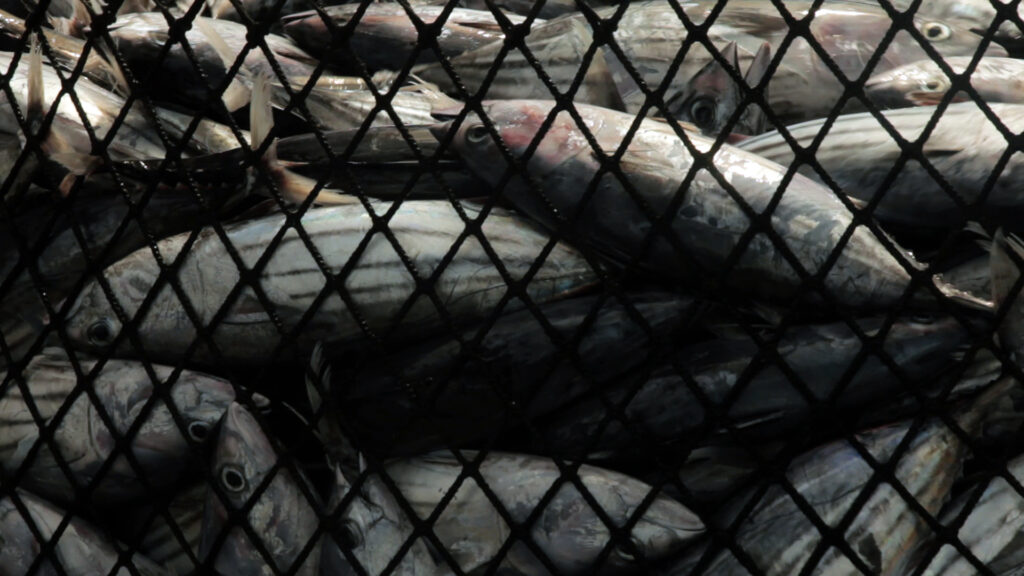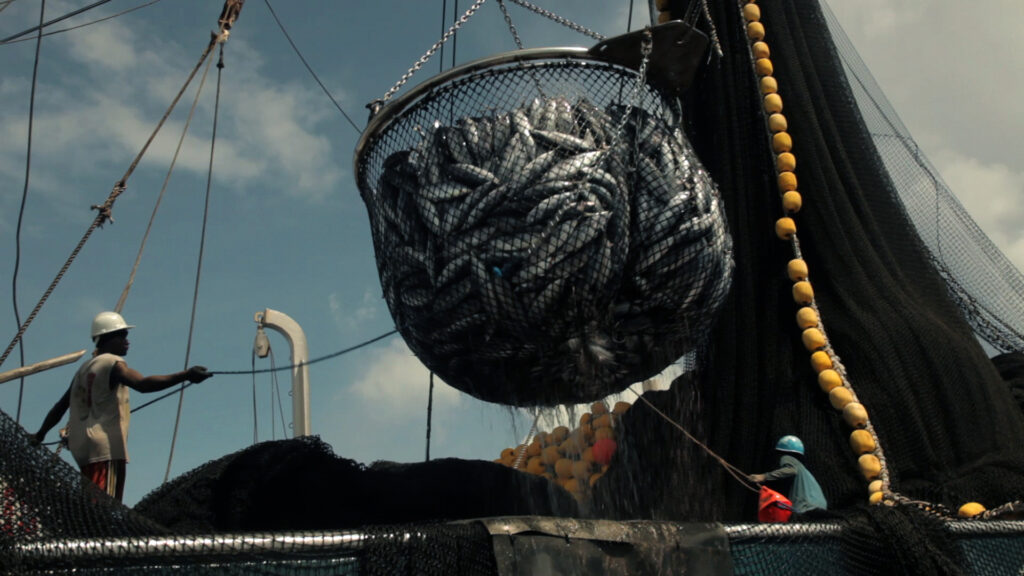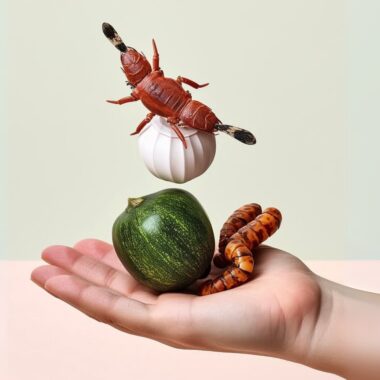William Harris talks to Cynthia Asaf of Pacifical, a company that uses digital traceability to improve transparency and integrity in the Pacific tuna supply chain, about why such technology is a game-changer for the industry with impact potential for supply chain monitoring worldwide.
William Harris: Could you begin by explaining how Pacifical came to be and what it does?
Cynthia Asaf: Pacifical is a company that was founded by PNA island nations [These are in the Western and Central Pacific and include Micronesia, Kiribati, Marshall Islands, Nauru, Palau, Papua New Guinea, Solomon Islands, Tuvalu and Tokelau] about 14 years ago, when they decided to provide an incentive for tuna fishing companies to operate sustainably. As a result, they created the first-ever large-scale MSC [Marine Stewardship Council] certified purse seine tuna fishery. They also wanted to develop closer connections with the end market so that the retailer and consumer would be more willing to pay a premium for certified and fully traceable sustainable caught skipjack from the Western and Central Pacific Ocean (WCPO).
Since then, things have evolved, and a lot of the tuna fishing activity in the world’s oceans is now certified by the Marine Stewardship Council. We have decided to make our experience and full chain traceability technology also available to other tuna fisheries, thereby bridging the gap between sustainable fishing, trading, verification, and technology.
William Harris: Why focus on Traceability and Verification?
Cynthia Asaf: Many traceability systems work on a post-shipment traceability scheme, meaning documentation and key data elements are collected only when the end-product is on the way to its destination or when it arrives there. This approach, which ignores what actually happened at sea, exposes brand owners to risks such as unverified shipments, demurrage, recalls, or even lawsuits due to unsubstantiated claims or incomplete records. Our SmarTuna platform collects and verifies at-sea information in real time, ensuring accuracy and compliance before the shipment or the end-product leaves port.
The only way to reach real sustainability is through full transparency and full chain traceability with information that is verified.
It is set up so that we have a Digital Tuna ID that contains traceability and verification data collected in real time from the moment a vessel starts fishing. We capture all the data within our system using a satellite vessel monitoring system (VMS) and complement it with AIS (Automatic Identification System) and through connections with key databases, such as the RFMO itself [Regional Fisheries Management Organisation]. Our experience shows us that the only way to reach real sustainability is through full transparency and full chain traceability with information that is verified.

William Harris: When you say that a tuna is assigned an ID at the point of catch, how does that work exactly?
Cynthia Asaf: It’s an aggregated ID. During a fishing event, many stages or events happen between catching and the sale of the raw material. The first step for a fishing partner is to request a unique fishing trip number so that they can prepare for fishing. Once that happens, the fishing trip is assigned an observer on board. Observers do not report to Pacifical, they report only and directly to the authority. The observer’s feedback includes many regulatory compliance aspects, including checking that the sustainable catch is not mixed throughout the trip and transhipment.
The fishing trip’s unique ID number is tracked by the vessel monitoring system in real time. As soon as the trip is finished and there is a transhipment event, the aggregated ID is extended to add the Trip ID of the carrier vessel and transhipment event and subsequently the receiver’s code. The Digital Tuna ID also identifies the processor and the company that is handling the transaction between the fishing vessel owner and the processor, as well as the type of fish that was caught.
for the first time, traceability and verification in our industry are offered from beginning to end, not retroactively from the end of the chain back to the beginning.
We also partner with the fishery authority to authorise moving the fish to the market by verifying that there were no non-conformities during the fishing trip, such as shark finning, gaps in licenses or plastic dumping. This level of assurance allows companies to confidently make claims and provide information on their website or packaging about the sourcing of each product. This is a big change because, for the first time, traceability and verification in our industry are offered from beginning to end, not retroactively from the end of the chain back to the beginning.
William Harris: This seems like a massive and important shift, since it’s so much more focused on real-time available information. For those less familiar with the topic or with the industry, could you briefly describe what the fishing industry in the Western Pacific looks like today? And why is traceability so important now for consumers and also for retailers?

Cynthia Asaf: The bulk of what we trace is skipjack tuna, which is the species mostly used for canned tuna in supermarkets worldwide. It makes up 60 per cent of all tuna in our oceans and reproduces at a very fast pace. It’s being managed very well in the Western and Central Pacific, as well as in the Eastern Pacific Ocean.
I should also mention that most of the commercial tuna species are not being overfished and are not at risk. A potential risk, however, is in the bycatch of endangered, threatened, and protected species, and the detection of fishing violations such as shark finning and illegal catch and transhipments. For instance, some vessels operating on the high seas have been documented as being off-radar. Their at-sea transhipped fish is not tracked, and in some cases, unaccounted fish is later mixed with fish that were legally caught, and then all are sold in the market together as “legal”.
Transhipment tracking can get very messy. It involves one huge carrier vessel with potentially up to 5,000 metric tonnes of fish and only, perhaps, three to four hatches. It is important to know exactly what catch is in which hatch, and at which position, so that it can be registered in the SmarTuna system. This isn’t just a problem in fishing; it’s an issue for other commodities, like coffee or cotton, for example. How do we make sure that during the process of transportation, sustainable harvest is not being mixed with other batches that are not supposed to be in the shipment?
This isn’t just a problem in fishing; it’s an issue for other commodities, like coffee or cotton.
William Harris: A consumer has very little control or even access to information over decision-making, in terms of what they should and should not purchase. How important is certification in the tuna industry, or the broader fishing industry, for an end consumer or retailer? Are all the different certifications like MSC [Marine Stewardship Council] equal, or are there some that people should pay more attention to than others in your opinion?
Cynthia Asaf: Certification is extremely important nowadays for many markets. We currently only work with fisheries that are either MSC certified or working towards an MSC certification. I think aligning with a certification is key. If you’re handling hundreds and thousands of products as a retailer, it helps to simply comply.

We’ve supported the MSC since the beginning. The PNA [Parties to the Nauru Agreement] MSC fishery was the first MSC-certified fishery for industrialised tuna fishing in the world. We chose it because it was a certification that looked at the conservation of all ocean species, the entire ecosystem. They are, of course, not perfect. Certification is only there to set the standard; you are still supposed to do your own due diligence. That’s why verification and traceability systems that actually prove your certification conditions have been met each time are important. At the end of the day, it is the brand that is actually running the risk of a scandal or, in the US, for instance, multi-million dollar lawsuits.
Certification is only there to set the standard, you are still supposed to do your own due diligence.
William Harris: What are some of the challenges in ensuring that fish labelled as sustainably caught (e.g., MSC certified) are actually compliant with those standards, and how can the industry improve traceability and accountability throughout the supply chain?
Cynthia Asaf: The problem is that an MSC certificate license holder might be a party that doesn’t own any vessels, or it could be a fishing vessel owner that might own three, five, or 15 vessels, but of course, the owner is not the one physically on the vessel as captain. Most of the time, it’s up to the captains to say whether fish are MSC certified or not. That is where we see a problem. To give one person alone, handling millions of dollars of fish, the responsibility or right to certify as sustainable and therefore be sold at a higher premium, or report violations, and in some instances, disqualify from even being sold at all.
Most of the time, it’s up to the captains to say whether fish are MSC certified or not. That is where we see a problem.
We need to make sure that a multilayer check scheme is in place. We need to make sure there is a captain’s statement that corresponds to the same information that we’re getting from an observer, that there are checks and balances, so that we protect the supply chain. Don’t get me wrong, most of the fishing companies are doing the right thing, it’s just important that we highlight their good behaviour.
William Harris: I very much like the idea of highlighting and promoting best practice operators rather than always focusing on people who are breaking the rules because I think this kind of sentiment leads to a lot of misunderstanding, especially in an industry like industrialised fishing
Cynthia Asaf: Since day one, we’ve never had the attitude of “you’re doing the wrong thing, shame on you”, because many in the industry just get blamed for things that are not necessarily true. The documentary series Seaspiracy, from a few years ago, for example, showed very shocking but very misleading data points. The tuna industry members are normally operating under the rules, and exclusive economic zones have a vested interest in making sure their waters are managed appropriately because many of these regions heavily depend on tuna for their own economies.
Systematically changing the way supply chains work means not just focusing on those few that are doing the wrong thing, but highlighting and rewarding the good behaviour.
I think systematically changing the way supply chains work means not just focusing on those few that are doing the wrong thing, but highlighting and rewarding the good behaviour that certain fishing companies, processors, and retailers are practising. That’s what it comes down to, because at the end of the day, everybody wins.

William Harris: Pacifical is working in close partnership with dozens of Pacific island nations. What is the nature of this partnership? How do those governments of those nations corroborate or collaborate with you guys, and what’s the impact of your regional focus?
Cynthia Asaf: Their role in the partnership is in verification. As I said previously, the Pacific nations have a vested interest in preserving tuna; this is their livelihood. Over 50 per cent of Kiribati’s GDP comes from tuna license fees and over 84 per cent of Tokelau’s government revenue, just to mention two. The Pacific Island nations really depend on fishing and the ecosystem being healthy and productive in order to be able to pay for their people’s education, health care and their retirement plans, etc. We are now also working in the Eastern Pacific, and we can’t wait to see the impact of this new approach.
The Pacific Island nations really depend on fishing and the eco-system being healthy and productive in order to be able to pay for their people’s education, health care and their retirement plans etc.
William Harris: I think most consumers probably misunderstand just how large the tuna industry, let alone the rest of the fishing industry, is; it’s enormous. Millions of people consume tuna on a daily or weekly basis, especially in the canned form, and it is a major and healthy source of protein. Do you see a future where you would focus on additional species?

Cynthia Asaf: Yes, definitely. Everything that we have built so far, we’ve built it for the tuna supply chain, but a few years ago, we aligned ourselves with the Global Dialogue of Seafood Traceability [GDST] standard on traceability, and our team is currently running several traceability pilots: for shrimp, crab, and a few other species. The structure we have set up has been designed for scale. The digital raw material IDs I mentioned earlier align with what’s called critical tracking events, which are the same for harvesting in aquaculture or wild fisheries, so yes, we are already implementing the incorporation of other species.
We started this verification scheme with one of the most complex fisheries and supply chains, and now we are turning to others, whether more or less complicated.
You are right about tuna when you say that most people don’t know that the wild tuna industry is very complex (farmed is less than one per cent). We started this verification scheme with one of the most complex fisheries and supply chains, and now we are turning to others, whether more or less complicated, but we’re close to putting that puzzle together: salmon, shrimp, tilapia and so many others are all important.
William Harris: It seems really topical to talk about sustainable fishing practices now because there seems to be more consumer interest and more consumer intelligence; people have access to more information and want to buy the right products, do the right thing. How important is it from your perspective that sustainable fishing becomes the only kind of fishing that people can do business in?
Cynthia Asaf: I think it’s super important because the world’s population is growing at a fast rate. So we will probably see seafood consumption increasing over the next few decades, and we need to make sure that we build a solid base within our supply chains that can sustain such growth in a sustainable and responsible way.
We will probably see seafood consumption increasing over the next few decades, and we need to make sure that we build a solid base within our supply chains that can sustain such growth in a sustainable and responsible way.
It has been a great thing that a lot of certifications have been pushing very hard with retailers over the past few years to make sure that they incorporate sustainability within their sourcing policies and requirements. With some processors, the conscience is maybe not quite there yet, but the financial incentive is. Since we started Pacifical, we have found that creating a synergy between the sustainability departments and the sourcing departments of brands and retailers is key. Today, I do see a lot more synergy happening and sourcing managers now being called sustainable sourcing managers, for example.
There has been a great improvement, but we need to continue. Right now, the technology is pretty much there for companies to do their due diligence in aligning and verifying that each one of their shipments and end-products is complying with the claims they are making towards their customers.
Cynthia Asaf is Chief Operating Officer at Pacifical and has been with the company since 2011. As an advocate for tuna sustainability, she has played a significant role in promoting the sourcing of sustainable tuna across various markets and implementing tracking verification systems. She represents Pacifical on the GDST (Global Dialogue on Seafood Traceability) Partners Council and helped Pacifical become the first seafood company to achieve GDST capability and interoperability. Originally from Colombia, Cynthia earned a Bachelor’s degree in International Business from Universidad del Norte. She holds a Master of Liberal Arts in Management from Harvard University and a Graduate Certificate in Corporate Sustainability and Innovation.
William Harris is the founder of ChefsList, a digital ordering platform based in Germany that operates between food and beverage wholesalers and their customers, including restaurants, butchers, bakers, hotel groups and supermarkets. He grew up in northern New South Wales, Australia, on a cattle property and gained a Bachelor of International and Global Studies (Government and US Politics) at the University of Sydney and worked in various industries before moving to Europe and the world of food supply chain start-ups. He is also The Common Table’s food industry advisor.






